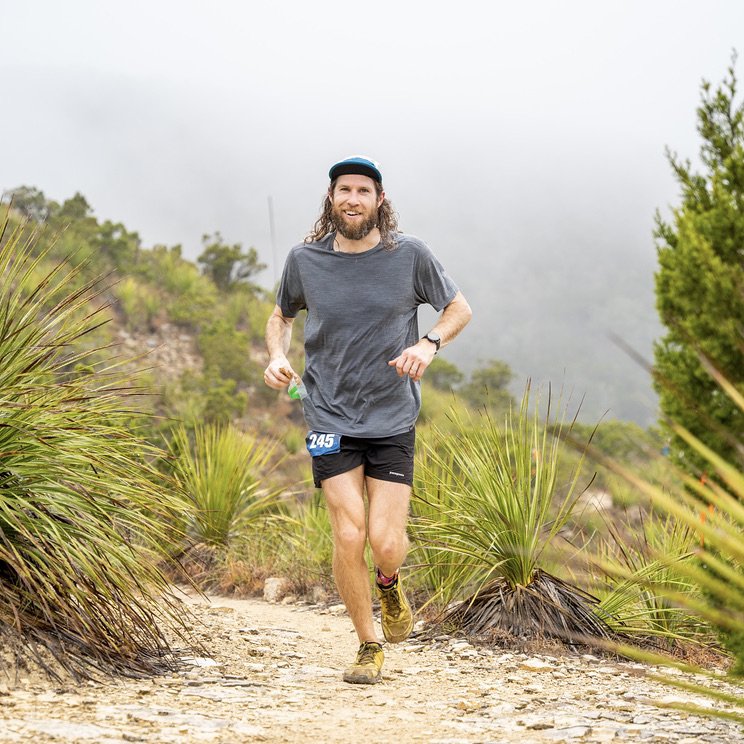How to Choose the Best Backpack for Your Adventure
From multiday trips to single-day summits, find the right backpack for your upcoming trek.
Backpacks in the outdoors have come a long way since their inception. From the humble bindle to the first Jansport backpack carried by hikers on Mt. Rainier, they’ve dutifully held our gear from the highest mountains to the deepest canyons. Thankfully, the backpack has been constantly improved upon, as one of the first military knapsacks that sought to cut down on weight used… sheet metal. Now, backpacks come with an almost limitless number of features. Some of these are necessities while some might just get in the way.
First, let’s define the most important term when looking at packs: Liters. Even if you’re not a metric-challenged American, this can be hard to visualize. While you can measure the dimensions of your pack and then do some math to figure out the volume, most companies simply fill up their bags with small plastic pellets and then record the volume of those pellets in liters. Understanding the concept can help us as we consider what size backpack you need for your upcoming adventure.
The first backpacking pack I bought was advertised as 80L, had no internal frame, no outside water bottle pockets, and the thinnest of lumbar belts. I bought it from a Safeway in Amman, Jordan. Safeway, if you don’t know, is a grocery store. European Walmart.
I rocked that thing for years, but I also paid the price many a time. The bottom zipper busted on the first trip I took it on. The top zipper jammed constantly, and the single outside pocket had a button closure, which means that things just fell out all the time. I resorted to safety pinning things shut for trips. It was a stiff canvas, which meant zero stretch when packing things down in it.
It was definitely not an 80L pack (probably closer to 45) but that discrepancy got me in lots of trouble. I would assume that because I had packed out an “80L” pack, I had packed comparatively the same as other people on the trip. I was consistently wrong. Since I am fairly certain none of you are shopping for packs in a Safeway, here’s a rundown of what you should look for when on the hunt for your next hauler.
Multiday Packs
Generally, anything between 45-80L is going to be your multiday pack. This is when you’re carrying everything you need for several days at a time. The range of liters in this upper end depends largely on your style of trip. If you’re sleeping under the stars on the trail, your pack needs to accommodate a tent, sleeping bag, and all the necessary kitchen supplies.
The lower end of multiday packs, 45-65L, is perfect for a weekend backpacking trip or an extended “hut hike”, where you have a designated place to stay at night. This may be a hotel, mountain hut, or like our Nepal trip, a teahouse. Not having to carry all your meals or a kitchen setup saves you lots of space and weight in your pack.
For multiday packs, internal frames and multiple entry points to the pack should be standard. A top-loader with a cinch closure allows you to cinch the top down when your bag isn’t totally full, or expand it when you need the space. You should also have a zipper at the bottom that opens into the main compartment. This is your sleeping bag compartment since packing conventions suggest the lightest part of your pack be around your waist area.
If you don’t need a sleeping bag, puffy jackets or other lighter clothing should be packed in this section. Some of these packs will also have side zippers to the main compartment, eliminating the need to completely unpack on the side of the trail if you need something you’ve stuffed in the middle.
Since it can take a second to get these larger packs on and off, make sure you have plenty of outer pockets for things you’ll need access to while hiking. Storage on the lumbar belt provides easy access to snacks, maps, or a phone camera and side pockets for water bottles let you grab water without stopping. Large mesh pockets on the outside also let you stash a raincoat or extra jacket to grab when the weather turns quickly.
Arguably the most important feature of a multiday pack is how it fits. The lumbar belt needs to be incredibly comfortable, even with a fully stuffed pack. Proper pack stashing suggests that the weight of the pack is on your hips and not your shoulders, so make sure the padding and construction is one that fits your waist snugly and comfortably. Any slight discomfort when you try on your pack will become a major discomfort on day 3 of your trip.
The other two features to take note of are the shoulder strap and the construction of the back support system. Lots of packs will have mesh support that holds the pack away from your body to increase airflow, so make sure this contours to your back nicely.
If you need an anecdote to prove this point, I have a Gregory pack that feels like it was made for my body. Everything hits in the right spot - lumbar belt, back construction, shoulder straps, etc. I also have an REI pack that appears to have the same construction (same size, same design, same amount of padding) but is not nearly as comfortable for me. It rubs on my collarbones and awkwardly digs into my hip bone. For all the time I’ve spent adjusting, I can’t get it comfortable. Yet, I’ve had friends who say that the same REI pack fits them perfectly. Go figure. Everybody has a different body with different proportions, so try on several brands to see which accommodates your specific build. Even the most expensive backpack might not feel great on your body.
Day Packs
Day Packs can range anywhere from 15L to 30L. When you have a base camp that you’ll return to each night like our Colorado Rockies trip or Big Bend, the best daypacks are light and easy gear haulers. Depending on how long your day is, and what sort of terrain you’re tackling, day packs can look pretty different for different needs.
The smallest and simplest is REI’s 18L Flashpack. It’s simply a canvas bag with a cinch closure and small cords for the buckle around the waist and across the chest. Water bottle, a few snacks, and a jacket and you’ve essentially packed this one out. More than a liter of water is going to feel cumbersome in this pack since there’s no internal construction to it. If you’re going over a half-day or need to carry more water, go bigger.
For sunrise to sunset days, you’ll want a daypack with a little more heft to it. Hiking Packs like the Gregory Stratos 24 or 34 have all the same features that a backpacking pack will have: Lumbar belt with pockets, a mesh suspension system on the back, and plenty of outer storage.
Though you’ll be carrying less weight, comfort is still key. You can really pack these packs to the brim and still be comfortable if the lumbar belt and shoulder straps fit your body. Other established brands like Deuter and Osprey make several sizes of the same pack, so you can count on a similar fit despite the size.
Most daypacks in the 20+ range will accommodate a water bladder system. Water will be the heaviest thing in your pack, which is why something the size of a flashpack isn’t going to hold enough for a full day out.
Make sure your daypack has the inner sleeve to nest your bladder in, and straps to hold down the tubing. Also, consider the percentage of water to storage space. A 3-liter bladder in a 20L pack won’t leave lots of room for other gear, so size up if you need maximum hydration.
Trail Running Packs
For trail running adventures or people looking to go super lightweight, trail running packs, or hydration vests, are becoming increasingly popular. Designed for ultramarathons or fastpacking adventures where lightness and simplicity reign supreme, these packs are nothing but a tight mesh vest with a lot of pockets.
There’s no frame and nothing extra besides a few loops for ice picks or hiking poles. Generally, water is kept in flasks that are kept in the front pockets, and back pockets are centered between shoulder blades and around your torso. The lightest weight vests might leave out back storage (used for ultra races where you’ll hit an aid station every few hours), but for all-day exploring like our Mexico Trail Running trip, make sure you have that extra storage in the back.
As the trail running market expands, these hydration vests have become more and more versatile. While they usually hold below 15L, there are some really great options that crossover into daypack territory. Ultimate Direction has a 30L fastpack that combines the front flask system with ample storage in the pack. The side zipper provides quick access to your stuff and the rolltop lets you pack it down to a much smaller bag if needed.
Brands like Salomon, Nathan, and Patagonia all make solid running vests in different sizes. Some will accommodate a bladder system and a flask system. If you’re running with these, then you know to expect some rubbing and possible hot spots. They all have their own way of distributing gear (one big compartment vs several small) and their own way of keeping it strapped tight, so try on several and see what you love.
The Last Steps
Since packs are usually a part of your larger hiking kit system, the perfect pack will depend on your other packing decisions - clothing, caloric and water needs, and other gear decisions such as cameras, binoculars, and hiking poles. What some people can do in a trail running vest, someone else might want a 40L daypack to carry their high-end camera or bougie picnic supplies. In this case, you’ll want to have a good sense of what gear you’re taking before committing to a backpack. So, while you may think that a backpack is where you start when planning for your trip, it can often be your last step once you’ve gathered your supplies. You can also ask for size recommendations from people who have gone before you and talk to your trip leader if you’re unsure about any specifics.
Ultimately, the goal is to forget you’re carrying a pack at all. Since our trips here at Top Out Adventures are expertly planned and executed in some of the most beautiful parts of the world, that won’t be hard as long as you’re diligent about getting what’s right for you. Ideally, any discomfort on your trip won’t come from your shoulders, but from your burning lungs and legs as you top out at some truly incredible spots.
About the Author
Chris Roberts is a writer, ultrarunner, and backpacker. He writes content for the outdoor and adventure industry, occasionally teaches at his local community college, and struggles to function without a trail race on his calendar. He aspires to one day quit all of these endeavors and become an itinerant banjo player. See his work and connect with him at chrisrobertscopy.com and @chrismroberts





